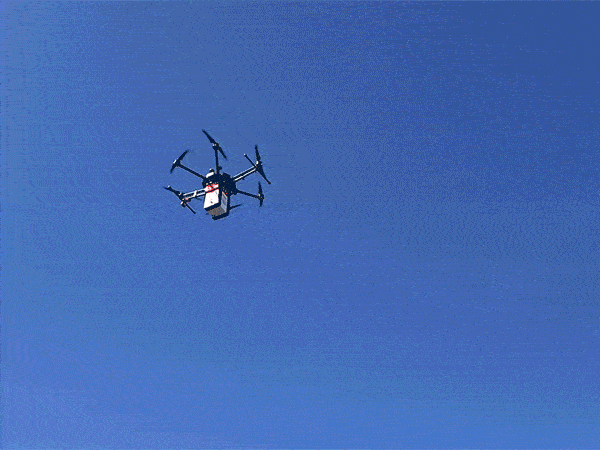Next, the team designed a specialized wireless biosensor, called Human Organ Monitoring and Quality Assurance Apparatus for Long-Distance Travel (HOMAL), to measure temperature, barometric pressure, altitude, vibration, and GPS location of the organ while it’s en route. With the drone and wireless biosensor ready, all the researchers needed was an organ to complete the experiment.
Last March, they received news that a kidney—which was not healthy enough to be used in a transplantation—was available for research. Over the course of roughly 24 hours, the kidney was shipped more than 1,600 kilometers (km) to Baltimore and the drone was set up for its first delivery mission. The results were published in the IEEE Journal of Translational Engineering in Health and Medicine on 6 November.

In total, the little bean-shaped organ was airborne for a little more than an hour over the course of 14 flight missions. For the farthest mission, the kidney flew 2,415 meters, a distance similar to the length of potential shipment routes for donor organs between inner city hospitals.
The researchers found that the temperature of the kidney remained stable, at a cool 2.5 degrees Celsius, throughout the test runs. Air pressure corresponded with altitude, and the drone-borne organ achieved a maximum speed of 67.6 km/h.
In an interesting twist, the kidney was subjected to slightly fewer vibrations when transported in the drone compared to a control delivery mission in a fixed wing plane (a dual engine turboprop King Air). Biopsies of the kidney before and after drone transportation revealed no damage from the journey, suggesting that the experiment—which the research team believes is the first ever use of a drone for organ delivery—was a success.

“I think that what we did here is very cool, very exciting,” says Scalea. “This is the first step among a series that I think will get patients closer to their life-saving organs quicker, and with better outcomes.”
Dr. Italo Subbarao, an associate dean at William Carey University College of Osteopathic Medicine in Mississippi, studies how to use drones to deliver medical supplies to remote areas after natural disasters. He applauds the research group in Maryland for their demonstration.
“The study was elegantly done with a focus on short transport time and distance, which is ideal to demonstrate potential feasibility,” Subbarao says. But he also says follow up studies would need to show that it could work over longer distances and delivery times.
So how soon can hospitals receive organs by drone delivery? Subbarao and Scalea both cite the same hurdles moving forward.
Notably, drones operated in the United States must currently remain within a pilot’s line-of-sight throughout their entire flight. And U.S. Federal Aviation Administration regulations state that a drone may not fly higher than 122 meters (400 feet) above structures within the area in which it is flying. These limitations will affect not only drone delivery of vital organs, but a swath of other medical supplies for which drones are being explored as a delivery method.
Scalea says, “Based on the national discussion about drone technology, I think that these things are going to be addressable and that we will be able to overcome each of them. Not without hard work, but I do think we can do it.”
After working on this project for three years, he is “thrilled” that the team was able to provide a proof-of-principle that drones are a viable option for organ delivery. He is now working with other research groups and hospitals across the United States to identify scenarios for which drone delivery could work.
Although the group’s recent experiment did not involve the kidney being transplanted into a living person, that is the obvious next step. Scalea suspects that such an experiment will happen in the very near future, perhaps early in 2019. “Stay tuned,” he says.
